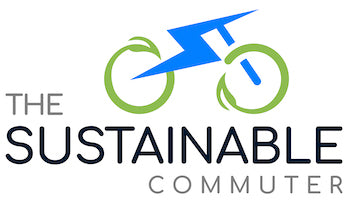
The Importance of Smart City Initiatives in Transforming Public Transportation
Share
Introduction
In today's fast-paced and urbanized world, the need for efficient and sustainable public transportation is more important than ever. With the rise of smart city initiatives, there is a growing focus on transforming public transportation to meet the needs of a rapidly changing society. In this blog post, we will explore the importance of smart city initiatives in revolutionizing public transportation and the various ways in which these initiatives are making a positive impact.
Definition of Smart City Initiatives and Public Transportation
Before delving into the importance of smart city initiatives in transforming public transportation, it is essential to understand what these terms mean. Smart city initiatives refer to the use of technology and data-driven approaches to enhance the quality of life and sustainability in urban areas. Public transportation, on the other hand, encompasses various modes of transportation accessible to the general public, such as buses, trains, trams, and subways.
Overview of the Importance of Smart City Initiatives in Transforming Public Transportation
Smart city initiatives play a crucial role in transforming public transportation by addressing some of the key challenges faced by urban areas. These initiatives focus on reducing traffic congestion, enhancing accessibility, and achieving sustainability. By leveraging technology and data-driven solutions, smart city initiatives aim to create a transportation system that is efficient, convenient, and environmentally friendly.
Section 1: Reducing Traffic Congestion
One of the primary goals of smart city initiatives is to alleviate traffic congestion in urban areas. By improving public transportation efficiency, these initiatives aim to reduce the number of private vehicles on the road, resulting in less traffic and smoother traffic flow. Technology plays a significant role in achieving this goal.
Leveraging Technology for Improving Public Transportation Efficiency
Smart city initiatives utilize technology to improve the efficiency of public transportation. For instance, intelligent routing systems can analyze real-time traffic data and suggest the most optimal routes for buses and trains. This not only reduces travel time but also minimizes delays caused by traffic congestion.
Real-Time Data Collection and Intelligent Routing
Real-time data collection is another crucial component of smart city initiatives. By gathering data on traffic patterns, passenger demand, and other relevant factors, transportation authorities can make informed decisions regarding the deployment of public transportation resources. Intelligent routing systems use this data to optimize routes, ensuring that buses and trains are deployed where they are needed the most.
Examples of Successful Initiatives
Uber and Lyft are prime examples of successful smart city initiatives that have revolutionized public transportation. These ride-sharing platforms utilize technology to connect passengers with drivers, providing a convenient and cost-effective alternative to traditional taxis. By leveraging real-time data, Uber and Lyft optimize routes, reducing the number of vehicles on the road and alleviating traffic congestion.
Section 2: Enhancing Accessibility
Another crucial aspect of smart city initiatives is enhancing accessibility to public transportation. In many urban areas, access to public transportation is limited, especially for individuals with disabilities or those living in underserved communities. Smart city initiatives aim to address these accessibility challenges by leveraging technology and data-driven approaches.
Smart City Initiatives for Improving Accessibility
One of the key smart city initiatives for improving accessibility is Mobility as a Service (MaaS). MaaS integrates various modes of transportation, such as buses, trains, taxis, and shared bikes, into a single platform. This allows individuals to plan and pay for their entire journey using a single app, making it easier and more convenient to access public transportation.
Role of Big Data in Optimizing Public Transportation
Big data plays a crucial role in optimizing public transportation and enhancing accessibility. By analyzing vast amounts of data, transportation authorities can identify areas with limited access to public transportation and develop targeted solutions. This data-driven approach ensures that resources are allocated efficiently, resulting in improved accessibility for all.
Examples of Successful Initiatives
Ford GoBike is an excellent example of a smart city initiative that has enhanced accessibility to public transportation. GoBike is a bikesharing program that allows individuals to rent bikes for short trips. By strategically placing bike stations throughout the city and integrating them with other modes of transportation, GoBike has made it easier for individuals to access public transportation and reach their destinations.
Section 3: Achieving Sustainability
Sustainability is a key focus of smart city initiatives, and public transportation plays a crucial role in achieving this goal. By promoting electric and hybrid vehicles and implementing intelligent transportation systems, smart city initiatives aim to create a transportation system that is environmentally friendly and sustainable.
Promoting Electric and Hybrid Vehicles
One of the ways in which smart city initiatives promote sustainability is by encouraging the use of electric and hybrid vehicles in public transportation. Electric buses and trains produce zero emissions, reducing air pollution and improving air quality in urban areas. Additionally, the use of electric and hybrid vehicles reduces dependence on fossil fuels, contributing to a more sustainable transportation system.
Implementing Intelligent Transportation Systems
Intelligent transportation systems (ITS) are another essential component of smart city initiatives aimed at achieving sustainability. ITS leverage technology to improve the efficiency and safety of public transportation. For example, traffic signal optimization systems can adjust signal timings based on real-time traffic conditions, reducing congestion and improving traffic flow. Additionally, ITS can enable the integration of various modes of transportation, making it easier for individuals to choose sustainable options.
Examples of Successful Initiatives
Tesla, a leading manufacturer of electric vehicles, is a prime example of a company driving sustainable transportation through smart city initiatives. Tesla's electric cars have revolutionized the automotive industry, offering an environmentally friendly alternative to traditional gasoline-powered vehicles. With their Supercharger network, Tesla has also made long-distance travel in electric vehicles more feasible and convenient.
Conclusion
Smart city initiatives are transforming public transportation in urban areas by addressing key challenges such as traffic congestion, accessibility, and sustainability. By leveraging technology and data-driven solutions, these initiatives are creating a transportation system that is efficient, convenient, and environmentally friendly. As we look to the future, smart city initiatives will continue to play a vital role in shaping the public transportation landscape and creating sustainable cities for generations to come.
